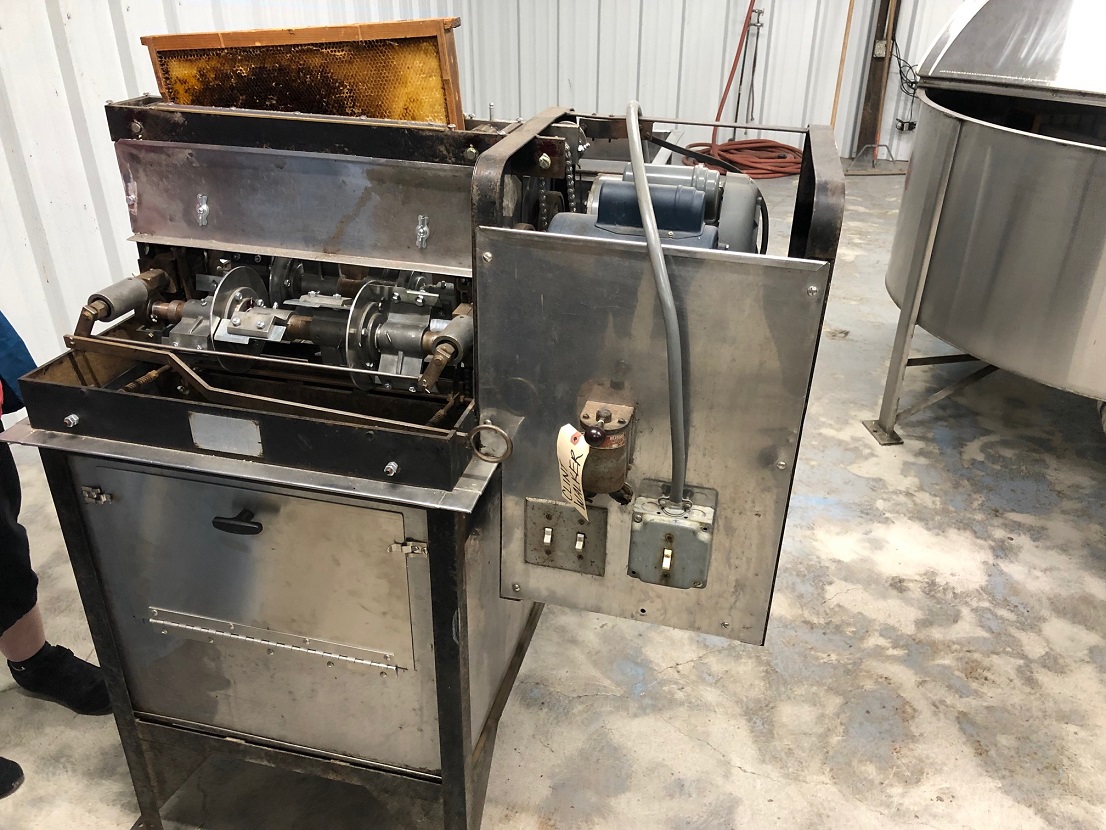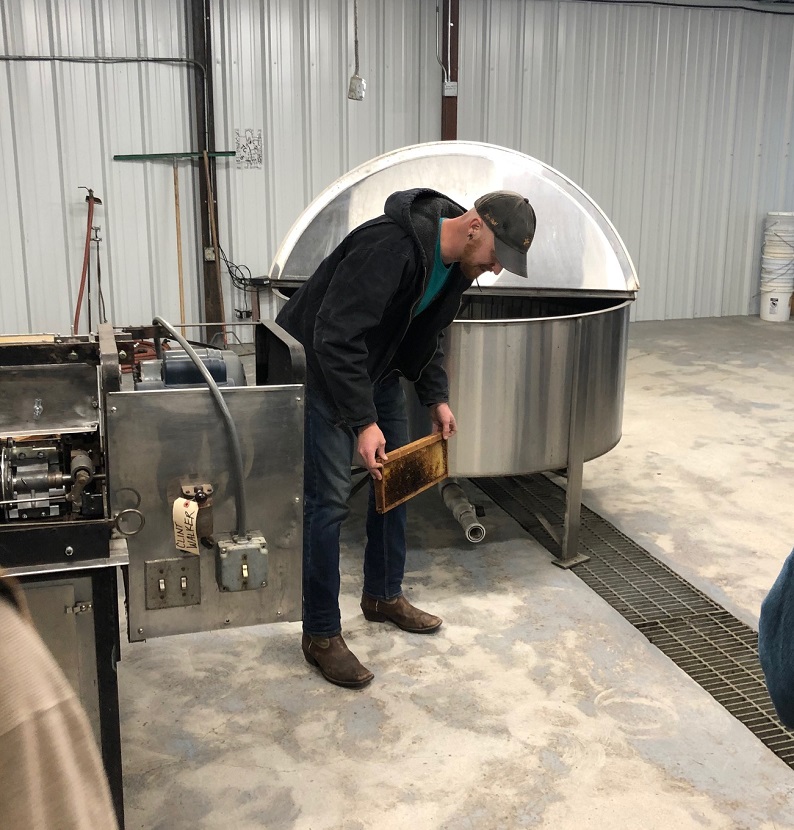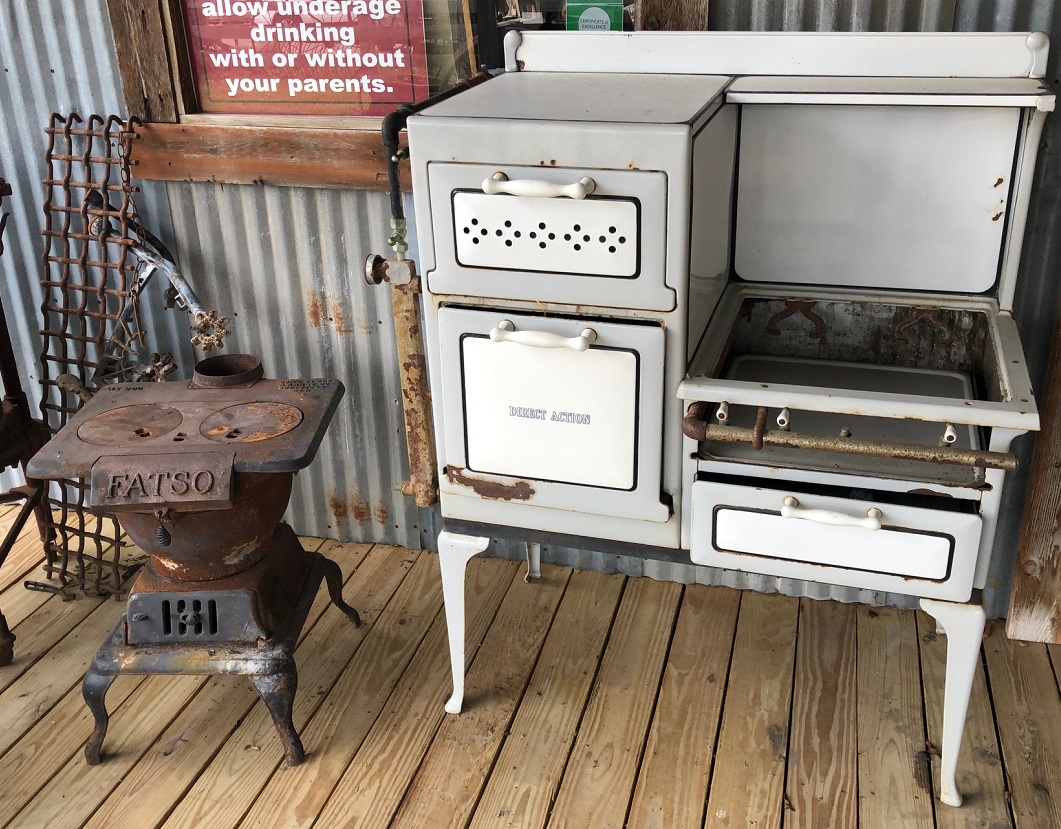Walker Honey Farm |
| Leader: | Billie Cunningham | |
| A Drivers: | Max Phillips & Rebecca Jordan, Ron & Laurie Taylor, Glenn Schiller & Ashley Paterson,
Patrick Beagle & Benny Parker, Fred & Darleen Thompson, Tim & Vanessa Stallard, Jack Reeves & Jim Baker | |
| Drivers: | John & Sue Anderson, Al & June Bohn, Claude & Joanne Folta, Linda Sullivan, Steve Koehn & Ken Smith, J R & Lois Howard, Jack & Sally Fisher, Bob & Gladys Steinmann, Stacy, James, & Thomas Beagle |

Passing through Bartlett on a Saturday Morning

At the Honey Farm
Tim's '31 Roadster, Max's '28 Tudor, Fred's '29 Fordor, Jack's '30 Tudor

Glenn's '31 Tudor, Ron's '31 Cabriolet, J R's '10 Corvette, and Patrick's '28 Sport Coupe
It may have been too cold to see the bees.

Honey, Mead, and Wine for Sale Here

Lois's Honey Haul

We were scheduled for a 1-hour tour of the factory.

John Walker at the separation machines told us all about the bees. When he was 6, he watched his granddad working around the hive, and his granddad was stung. His granddad just pulled out the stinger and kept working while the bee was left to die. John felt sorry for the bee and wasn't afraid of them after that. He said people who get into the beekeeping business are either born into it or are out of their minds. He was both. The bees don't fly when the temperatures are below 60 degrees and pretty well stop at 50 degrees. They keep the hive at 98 degrees by flexing their muscles to create heat. The drones don't do anything except mate. Eat, mate, and die (shortly after mating) are their only jobs. The worker bees are all female. To make a queen, one worker bee is given royal jelly. This activates an enzyme, and she will start laying eggs. The best 20 eggs get fertilized. The first grub that hatches kills the rest. Unfertilized eggs will become drones. Queens can lay eggs for about 4 years. (More)

We were late, but John was a fast talker, and I believe he told us everything in 30 minutes. The bees need the sun for navigation. When searching for flowers, the worker bee has a range of about 3 miles, but in tough times, they can fly out to 6 miles to find pollen. When the bee returns from the hunt, it does a figure 8 dance and then points in the direction of the food. The size of the figure 8 will indicate how far to travel, and how vigorously she dances will indicate how many bees should make the journey. See the waggle dance.

There are cutting blades that trim off the wax caps on the brown hive frame.

The honey, debris, and a little wax are sent to the machine on the right
where centrifugal force further separates the honey.

Here we are in the hot room. It takes a week to heat a barrel of honey to 130 degrees so it will flow.
The honey is passed through a 50 micron sock into the three tanks.

From here, they fill the jars with honey.
Ken, Steve, Claude, Jack, and Ashley in Review

At this station, they mix flavors like raspberry, blackberry and peanut butter.
If the honey
you bought never crystallizes, it's been processed too much and may have been diluted with other sugars.
Honey Horror Stories

Fred eyes the honey mead. Two ladies taste the wine.

Patrick, James, and Thomas wait for others to shop.

The gang at the Oscar Store
Lois, John, Glenn, Sue, June, Al, Tim, Vanessa, Jack, Laurie, Ron,
Ashley, Rebecca, Max, Billie, Joanne, Benny, Darleen, Claude, Fred, Patrick, and Jim

Cars at the Oscar Store:
Max's Tudor, Fred's Tudor, Patrick's Sport Coupe,
Jack's Tudor, Glenn's Tudor, Tim's Roadster, Ron's Cabriolet

Like Grandma Had

Fatso and
Direct Action Ranges
A range is what you cook food in or on in the kitchen.
A stove is a heater or heating appliance.

1930's Roper Modern Gas Range

Tim, Vanessa, Benny, Jack, Jim, Patrick, Rebecca, Max, J R, & Billie

Ken, Gladys, Bob, John, Sue, Al, Ron, Glenn, Ashley, Laurie, June, Darleen, Fred, Claude, Joanne, & Steve

Jack, Sally, Linda, Claude, & Joanne
We all had a great time even if one car couldn't get to a gas station on Ron's 1-gal. auxiliary gas can.
